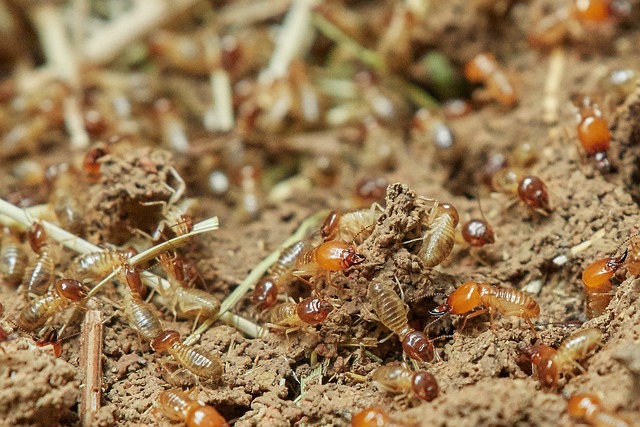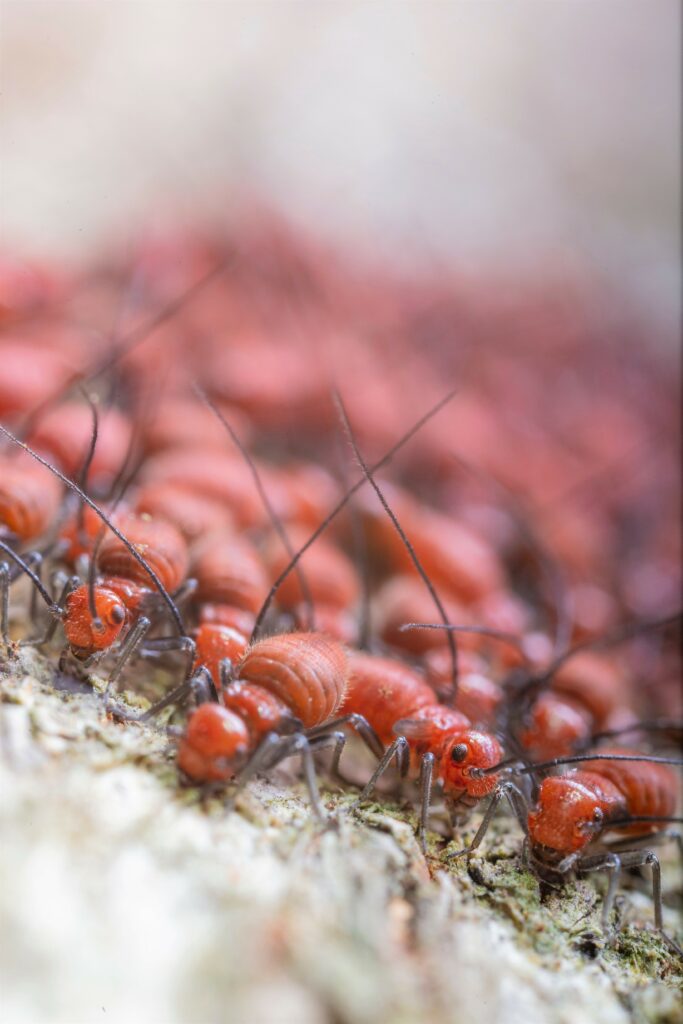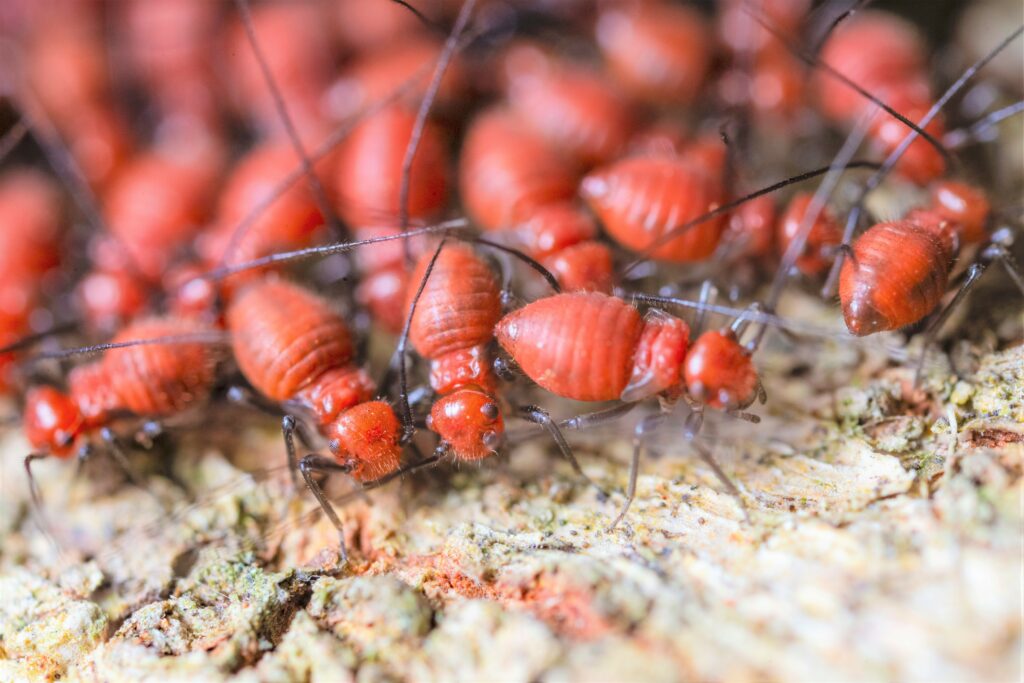Last updated on June 12th, 2023 at 04:47 am
Do you know what’s worse than a noisy neighbor? Termites! In the U.S., about 600,000 homes are damaged by termites yearly. These pesky little critters can wreak havoc on your home and cause some serious damage. So, let’s dive into how termites find their way into your apartment and what you can do to get rid of them. Unlike other pests that can crawl through small cracks and openings, termites typically enter through wood that is in direct contact with the ground. This means that if your apartment is on the ground floor, you’re at a higher risk for a termite infestation.
Termites are one of the most destructive pests that homeowners can encounter, they can even deem your apartment inhabitable. If you suspect that you have a termite infestation, look out for these signs and act quickly to protect your home. Termites are attracted to wood, and they can enter your home through a variety of entry points. These include:
- Cracks in the building’s foundation
- Gaps around windows and doors
- Wooden support beams
- Plumbing and electrical conduits
- Roof tiles or shingles
- Firewood or other wooden objects stored near your home
Once termites have found their way into your home, they will begin to feed on the wood in your walls, floors, and other structures. Over time, this can cause significant damage that can compromise your home’s stability.
How Do Termites Look?
Firstly, it’s important to note that there are several different types of termites, each with their unique appearance. However, some general characteristics apply to most species. Termites are typically small, measuring between 1/4 and 1/2 inch in length. They have soft, pale bodies that are segmented into three parts: the head, thorax, and abdomen. Their heads are equipped with powerful jaws that they use to chew through wood and other materials.
One of the most distinctive features of termites is their straight, beaded antennae. Most species are pale in color, ranging from white to light brown. However, some species may appear darker due to the color of the wood they have been feeding on. In addition, the soldier termites of some species are dark in color and have large, powerful jaws for defending the colony.
Where Do Termites Come From?

Termites have been around for millions of years, and they are found on every continent except Antarctica. According to phylogenetic studies, termites evolved from cockroaches, no wonder people think they look like cockroaches. In the United States, the most common types of termites are subterranean termites, which live in the soil and build mud tubes to access their food sources.
Subterranean termites typically enter homes and buildings through cracks in the foundation or walls. They are attracted to moisture and can often be found in areas with moisture problems, such as leaky pipes or damp basements.
Signs of Termites in the House
There are several signs that you may have a termite infestation in your home. These include:
- Piles of discarded wings
- Mud tubes on your walls or foundation
- Hollow-sounding wood
- Blistering or peeling paint
- Buckling or sagging floors
- Visible termite swarmers
If you notice any of these signs, it’s important to act quickly to prevent further damage.
How to Get Rid of Termites in the House
Getting rid of termites can be a challenging and time-consuming process. However, with the right approach, you can eliminate these pests and protect your home from further damage. Here are some steps you can take to get rid of termites:
1. Identify the source of the infestation
Before you can eliminate termites, you need to find out where they are coming from. This may require a thorough inspection of your home to locate the nest and determine the extent of the infestation.
2. Use termite baits
Termite baits are a popular and effective way to eliminate termites. These baits contain a slow-acting poison that is carried back to the nest by worker termites. Over time, this can eliminate the entire colony.
3. Apply termite treatment
Termite treatment involves applying a liquid or foam pesticide to the affected areas of your home. This can be an effective way to kill termites on contact and prevent further damage.
4. Repair any damage
Once you have eliminated the termites, it’s important to repair any damage that they have caused. This may include replacing damaged wood, repairing walls and floors, and sealing up any entry points to prevent future infestations.
How Do Termites Spread?

Termite colonies are made up of different types of termites, including workers, soldiers, and reproductive termites. The reproductive termites, known as swarmers, are responsible for starting new colonies and spreading the infestation. Once they find a suitable location, they shed their wings and begin to mate, thus starting a new colony.
One of the most common ways termites spread in apartments is through cracks and gaps in the foundation, walls, and roof. Termites are very small and can fit through even the tiniest of spaces. They can also enter your apartment through wooden furniture, boxes, or other items that have been infested with termites.
Another way is through shared walls and piping systems. Termites can easily travel through these areas, allowing them to infest multiple units within the same building. This is why it is essential to get regular inspections and treatments for termites in apartment buildings.
How to Check for Termites Yourself
While hiring a professional pest control service is an option, it can be expensive. However, you can check for termites yourself with these simple steps.
Inspect the Exterior of Your Home
Start by examining the outside of your home for any signs of termite infestation. Look for mud tubes, which are tiny tunnels made of mud that termites use to travel from their nests to food sources. Check for any cracks or holes in the walls, as termites can enter through these openings.
Check the Foundation
Next, inspect the foundation of your home. Check for any cracks or gaps in the foundation, as this can be an entry point for termites. Look for any signs of mud tubes or termite droppings around the foundation.
Inspect the Interior of Your Home
Once you’ve checked the exterior, move to the interior of your home and inspect the walls, ceilings, and floors for any signs of termite damage. Tap the walls with a screwdriver or a similar tool to check for any hollow or soft spots, which may indicate termite infestation. Check for any blistering or peeling of paint, as this can be a sign of termite damage.
Look for Swarmers
Swarmers are winged termites that emerge from the nest to mate and start new colonies. If you see swarmers around your home, it’s a clear sign of termite infestation.
Check for Termite Droppings
Termite droppings, also known as frass, are small pellets that look like sawdust. Check for any frass around the foundation of your home, in the attic, or the basement.
Call a Professional
If you’ve found any signs of termite infestation, it’s advisable to call a professional pest control service to inspect your home thoroughly. They can identify the extent of the infestation and recommend the best course of treatment.
